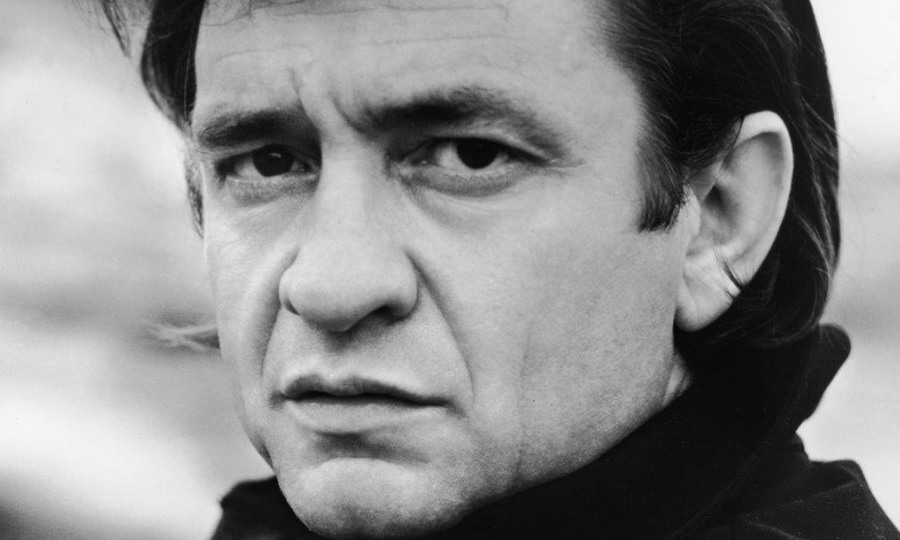With Rick Rubin at the helm, and a haunted L.A mansion at their disposal, here’s how the Red Hot Chili Peppers created the intoxicating brew that is Blood, Sugar, Sex, Magik.
Founded in 1983, Red Hot Chili Peppers’ original line-up featured vocalist Anthony Kiedis, bassist Flea, drummer Jack Irons and guitarist Hillel Slovak and was heavily centred on frat-rock roots tinged with funk. After Slovak’s death and going through an array of drummers, the band finally settled on drummer Chad Smith and guitarist John Frusciante in 1988.
Following the underwhelming experience of recording Mother’s Milk (1989) and the creative restrictions imposed on them, the band left EMI and signed with Warner Bros, going to work on their fifth album, that many critics and RHCP fans would hail as their magnum opus. Here’s what when into the making the intoxicating brew that is Blood, Sugar, Sex, Magik.

A Blooming Musical Partnership
Upon signing their deal with Warner Bros, RHCP began the search for a suitable producer. One person that was on the Chili Peppers’ radar at the time was Rick Rubin.
After achieving notable fame through his early work with the Beastie Boys and Run D.M.C, Rubin piqued the interest of the band, though it wasn’t without some reservations. In a 1991 interview with BAM Magazine, Anthony Kiedis expressed his initial concerns about working with the bearded maestro: “At first, I thought, ‘Wow, Rick Rubin, I don’t know. [I thought,] He’s into all of these negative bands like Slayer and Danzig. The Red Hot Chili Peppers have always been totally into positive energy. It’ll never work.”
In contrast to the creative restrictions of their previous LP, the four members of the Red Hot Chili Peppers knew that Rubin would provide them with the creative freedom they needed to explore their sound. His understandings of the weaving flow of hip-hop lyricism, combined with his wealth of musical knowledge and know-how, proved to be the perfect glue for RHCP. They also relied on Rubin during times of writer’s block, guiding the band along as they composed guitar licks and drum patterns.
The bond formed between RHCP and Rubin during the production of Blood Sugar Sex Magik proved to be a strong one; the two went on to work together on the band’s five following albums, culminating 20 years later with 2011’s I’m With You.
Unconventional Surroundings
With the band seeking to shed the darker, heavier sound of their previous effort, Rubin suggested recording the album within less-traditional confines. After initial writing sessions between Kiedis and Frusciante to arrange song structures, the band and Rubin relocated to a sprawling 10-bedroom Laurel Canyon mansion, once owned by magician Harry Houdini, which was supposedly haunted. It’s now affectionately referred to as The Mansion and is owned by Rubin.
Recording sessions were relatively quick compared to past albums; tracking was completed in under a month. All band members, except for Chad Smith, lived within the mansion throughout the process. The house was so large that Kiedis was able to set up and track all of his vocals from the comfort of his bedroom.
In the 1991 documentary Funky Monks, Frusciante ponders over the RHCP’s decision to record the album in such a foreign environment. He described writing and recording within the traditional confines of a studio as “sterile”, reflecting that the change of scenery acted as a catalyst for change within the band – though previous albums had been written heavily through jam sessions, they began to focus heavily on the framework of their songs, meticulously analysing structure and form.
The secluded nature of Blood Sugar Sex Magik’s recording process ultimately had an overwhelming effect on guitarist John Frusciante’s mental health, who also began dabbling with heroin at the same time.
In his 2004 memoir Scar Tissue, Kiedis noted the change in Frusciante’s behaviour after sessions had concluded: “He had such an outpouring of creativity while we were making that album that I think he really didn’t know how to live life in tandem with that creativity.”
Frusciante’s problems would only escalate from here, culminating in his five-year departure from the band in May 1992. Nonetheless, his guitar work on BSSM was nothing short of virtuosic. Solos, rhythmic ventures and lead lines on songs like I Could Have Lied, Under The Bridge, Funky Monks displayed a multifarious technical and emotional palette; a style that would become synonymous with the guitarist, eventually landing him on Rolling Stone’s Greatest Guitarists of All Time list.
Ditching The Grit of Album’s Past
Much of Blood Sugar Sex Magik’s charm and appeal come from John Frusciante’s expressive, Parliament-influenced guitar work. Opting to leave behind the weighty distortion and metal-esque licks of the band’s previous LP, Frusciante played around with lighter, more delicate tones. An early 60s Fender Stratocaster was his weapon of choice, and he would often plug his guitar directly into the mixing board, with a Boss DS-2, Big Muff and an Ibanez WH10 applied for some dirt and expression. He also used a 1966 Fender Jaguar for overdubs – the same one that was immortalised in the video for Under The Bridge.
Though still employing thick overdrive on songs such as Suck My Kiss, Frusciante experimented with unique tones and guitar effects never before heard on a Chili Peppers album, including the washed-out shimmer of Under The Bridge (achieved using a Boss CE-1), and the Hendrix-inspired reverse guitar solos on Give It Away. This was also the first time an acoustic guitar had been used on an RHCP album, appearing on two album cuts, Breaking the Girl and I Could Have Lied. Frusicnate favoured Martin’s, namely a D-28 and D-12 28 12-string model.
Contrasting with the band’s new enlightened and diligent approach to writing songs, John Frusciante took a more relaxed angle when it came to composing guitar solos. In fact, all of the solos on Blood Sugar Sex Magik were recorded in one or two takes, preventing over-analysing licks and flourishes and ultimately aiding the album’s organic tone.
Subduing the Rhythm Section
Throughout the 1980s, Flea’s approach to bass and funk music, in general, was very heavily dominated by an intense, slap-stye of playing. Under the guidance of Rubin, Flea took a more minimal approach when writing basslines for Blood Sugar Sex Magik, focusing more on complimenting each track instead of showcasing his prolific finger-work.
In a 1991 interview with Guitar Magazine, Flea elaborated on his simpler approach: “I consciously avoided anything busy or fancy, I tried to get small enough to get inside the song, as opposed to stepping out and saying, ‘Hey, I’m Flea, the bitchin’ bass player.’ I hardly slap at all on the new record, aside from ‘Naked in the Rain’”.
Chad Smith also took a more unobtrusive playing style with his Gretsch drumkit. Though still finding his groove within the band, he did away with the heavy low-end and intense playing style that defined the rhythm section on Mother’s Milk, taking on a more laid back approach and pairing it with Rick Rubin’s dry production.
Shedding The Cheek; Digging Deep
Keeping in line with the fresh approach the rest of the band had applied, Anthony Kiedis’ vocals and lyrical content saw a shift from Red Hot Chili Peppers’ earlier works. After being forced to write more radio-friendly lyrics for Mother’s Milk, Blood Sugar Sex Magik’s centred mostly on themes of sex, love, death and exuberance.
While maintaining the frat boy cheek the band had become known for on tracks such as Sir Psycho Sexy, Kiedis’ lyrics drew mostly from past and then-current relationships; from River Phoenix’s shoutout on Give it Away, to the tumultuous love story of Breaking The Girl, to the more reserved I Could Have Lied, dwelling on Kiedis’ brief relationship with Sinead O’Connor.
It also saw a dark, vulnerable side come to the surface, which inspired one of RHCP’s most unforgettable anthems. After flicking through a notebook in Kiedis’ bedroom, producer Rick Rubin came across a poem Kiedis had written about his struggles with drug addiction and the loneliness that ensued. Though Kiedis was hesitant to show the poem to the rest of the band, as he deemed the lyrics too sensitive for a Red Hot Chili Peppers track, it went on to become Under the Bridge.
It took Red Hot Chili Peppers four albums and a seemingly endless succession of band members for the band to finally catapult from funk-rock wannabees to fully-fledged arena rockstars.
With Smith’s crisp snares, Flea’s melodic funk bass, Frusciante’s expressiveness, and Kiedis’ charm, Blood Sugar Sex Magik saw the band strike the perfect balance between four powerful personalities, resulting in one of the greatest albums of the 1990s, and arguably, the best album in Red Hot Chili Peppers’ catalogue.



